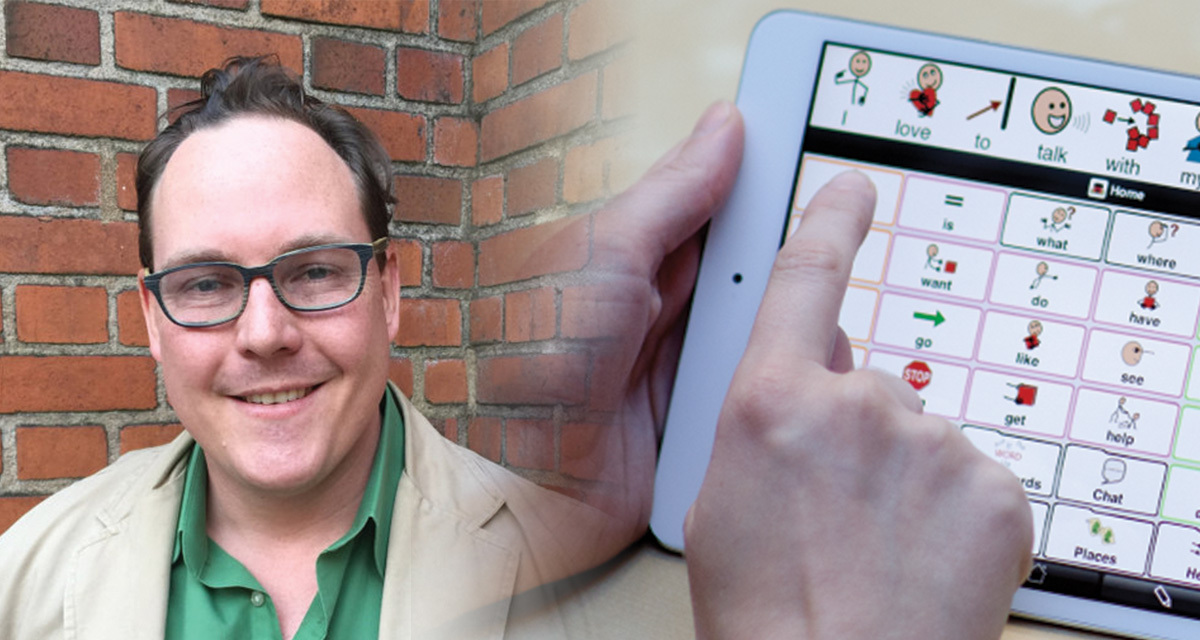Amplifying The Voices of Those Who Can’t Speak
In 2007 Steve Jobs introduced us to the iPhone at the MacWorld expo. Taking in the innovation, Samuel Sennott ’04 felt an unexpected familiarity. “That’s just like what we use,” he thought.
A special education professional working with students unable to speak, Sennott was familiar with the power of devices to improve communication and connection. His students used assistive devices to share their ideas and participate in conversations. But what was missing was an affordable, agile solution that could help children unable to speak communicate their needs and build community.
So while the rest of us got to work uploading our vacation photos and syncing our iTunes libraries on our new iPhones, Sennott started his prototype. Unbeknownst to him this catalytic event would lead to thousands of people communicating verbally for the first time through the creation of Proloquo2go—an iPhone app that built on the very technology that had captivated the world.
Sennott, who now serves as an associate professor at Portland State University (OR), where he leads the Universal Design Lab, began his journey of amplifying the voices of those who can’t speak several years earlier. As a newly minted Gordon alumni, history major and special education teacher at a public school on the North Shore of Boston, Sennott created a mainstream inclusion program for kids with complex disabilities, including speech-related diagnoses. Says Sennott, “We were giving them the assistive technologies and the educational support they needed in the classroom.” This meant that students with certain speech-related diagnoses could be integrated into a regular classroom, learning collaboratively with their peers.
Outside of his teaching responsibilities, Sennott regularly accompanied a student and her family to therapy appointments at Boston Children’s Hospital (BCH). During these visits he met his future mentor, John Costello, Director of the Augmentative Communication Program at BCH. “He showed me how to help this young girl communicate, even though she couldn’t use her voice. She used a wheelchair, couldn’t move her arms and couldn’t hold a pencil.” Under the direction of Costello, Sennott was amazed when his student began to defy expectations, writing and scanning the alphabet. Before his eyes the potential for change through custom-tailored solutions became clear to Sennott.
He sought more mentors in the assistive technology space and enrolled in a master’s program. In 2009, with his co-creator, David Niemeijer, he launched the transformative communication software Proloquo2go. Because it was an iPhone app, Proloquo2go removed financial and accessibility barriers. It lowered the price of assistive speech technology tenfold, and in turn gave the power of verbal communication to thousands of people previously unable to speak. “When people gain access to assistive technologies, especially technologies in core parts of life,” he says, “it opens up their world.”
This type of transformation has a spiritual element for Sennott, who approaches his work with a heart of service and a vision for wholeness. In it, he says, he can “experience seeing God’s love in myself and then being able to see it so clearly in [my students].” He knows the life-changing impact of inclusion, harkening back to the community and network he built in Gordon’s residence halls and classrooms: “The power of network and community is so important to me. I believe it’s a lesson that has gone deeper over time.”
 The Bell
The Bell